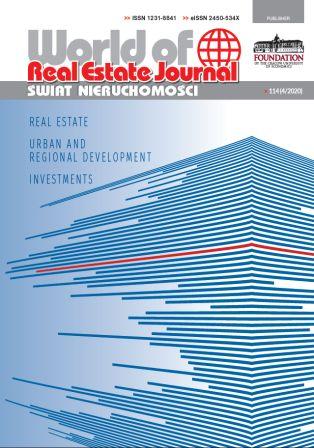The Applicability of the Gini Coefficient for Analyses of Real Estate Prices
The Applicability of the Gini Coefficient for Analyses of Real Estate Prices
Author(s): Justyna Brzezicka, Marta Gross, Katarzyna KobylińskaSubject(s): Business Economy / Management, Micro-Economics, Methodology and research technology, Rural and urban sociology
Published by: Fundacja Uniwersytetu Ekonomicznego w Krakowie
Keywords: Gini coefficient; coefficient of variation; Lorenz curve; real estate marker analyses;
Summary/Abstract: Purpose - This article discusses the selection of outlying transactions for the purpose of developing a database for analyses of real estate prices. The study aimed to determine the applicability of the Gini coefficient as an auxiliary tool for evaluating the distribution of real estate prices. Design/methodology/approach– Changes in the values of the Gini coefficient were analyzed in databases that were gradually reduced by extreme values. The primary database was composed of real estate prices in three districts of Warsaw in 2017-2018. Findings - The results were also collated with other variability indicators and measures of location, asymmetry and skewness. The study demonstrated that the Gini coefficient produces similar results to a simple coefficient of variation, but is less sensitive to price changes. Research implications - The main research limitation was a small database covering a single location; therefore, the article could be regarded as a case study. The study demonstrated that the Gini coefficient can be applied as an auxiliary tool in assessments of price dispersion on the real estate market.
Journal: Świat Nieruchomości
- Issue Year: 1/2020
- Issue No: 111
- Page Range: 4-15
- Page Count: 12
- Language: English

